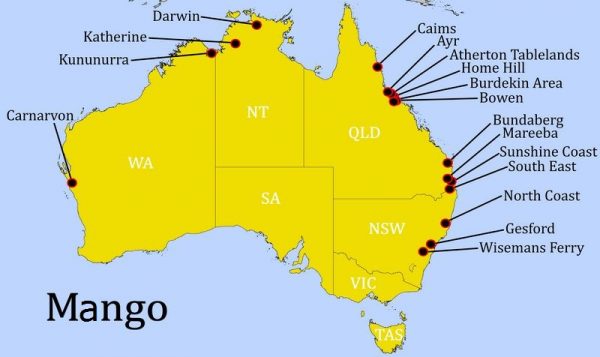Mango Picking / Packing


Australian Mangoes and How To Be a Fruit Picker
But did you know that in Australia, there are at least 10 varieties of mangoes in the market?
Out of the 10 varieties, the Kensington Pride and B74, or what they call in the market as “Calypso,” produces the longest from September to March. Mangoes are mostly grown in Queensland, the Northernmost part Territory in Australia, however, they are also available in parts of Western and Southern Australia.
The harvest time for mangoes differ depending on their variant, if you’re around at the Northern or Western Territory in September, then it might be your luck to witness the massive harvest of the mango fruit. The dry and tropical regions of Queensland such as Burdekin, Bowen and Townsville usually harvest during the month of November. The demand for it may be stable, but the production quantity varies every year, depending on the conditions that may affect its plantation. The mango business in Australia can make a staggering $140million per year; this is if the crops bear their normal fruits and not their seasonal lurch.
Fruit picking jobs in Australia can earn you at least $115 a day; however, the physical demand of the day job also requires you to be physically fit and able to perform the activities needed in order to harvest the fruits. If you are the type of person who doesn’t mind seizing the opportunity to earn while backpacking, the rewards are pretty satisfying, not to mention the possibility of your working holiday visa to be extended. At “Fruit Picking Australia,” they provide services that allow interested applicants to join and apply for a job as a fruit picker. If you’re lucky and you find a good employer to hire you, meals and accommodations can also be provided for free.
Australian mangoes are very interesting to deal with, especially if you are trying to get a job as a fruit picker. Once they are ripe, the sweet smelling yellow fruit can be very refreshing and delicious. Ripe mangoes usually turn orange or yellow from their original green color. If you touch the fruit and the skin is a bit tender, it can also mean it’s ripe. You really can’t go wrong in knowing when the fruit is ripe. Mangoes, when ripe don’t necessarily have a flawless skin color; in fact, some of them may have small dark patches and doesn’t usually affect the fruit.
Mangoes have levels of sweetness and their nutritional value also comes at a high level of importance. Just like the apples, a serving of one ripe mango can cover your daily need for the vitamins A and C, imagine the nutrients you can fill while working as a mango picker? Just in case you’re wondering, mangoes are the most popular seasonal fruit in Australia and Australian’s can consume at least 8 million trays of ripe mangoes in a year. Imagine the demand for local and export inventory!






































